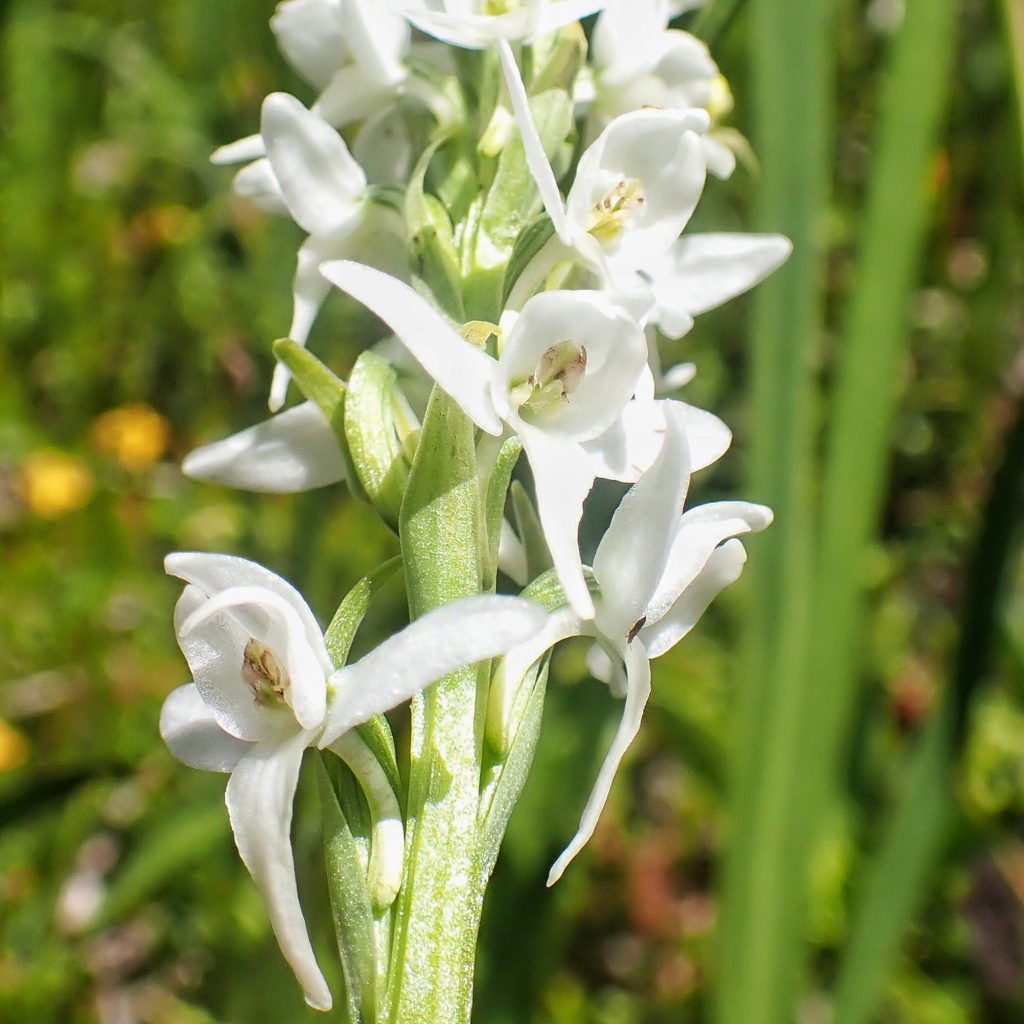
It is always a treat to find orchids of any sort, because not only do they tend to be quite beautiful, with exotic looking and interestingly shaped flowers, but they require quite precise conditions in which to grow, and Platanthera dilatata is no exception. Their seeds cannot germinate except in the presence of certain fungi, and in a study on the mycorrhizal relationships of this species in se Alaska (Connor Melton; 2020- https://media.proquest.com/media/hms/PFT/2/nt1cG?_s=1i4zxFYJnbZ%2BRc%2BJTM6zArTyyo8%3D) it was found that fungi in the genera Tulasnella, Epulorhiza, and Ceratobasidium, were most commonly associated with Platanthera dilatata. For an interesting overview of a few populations of these plants in Canada, as well as orchids in general, see https://research.library.mun.ca/4178/1/Boland_JTodd.pdf
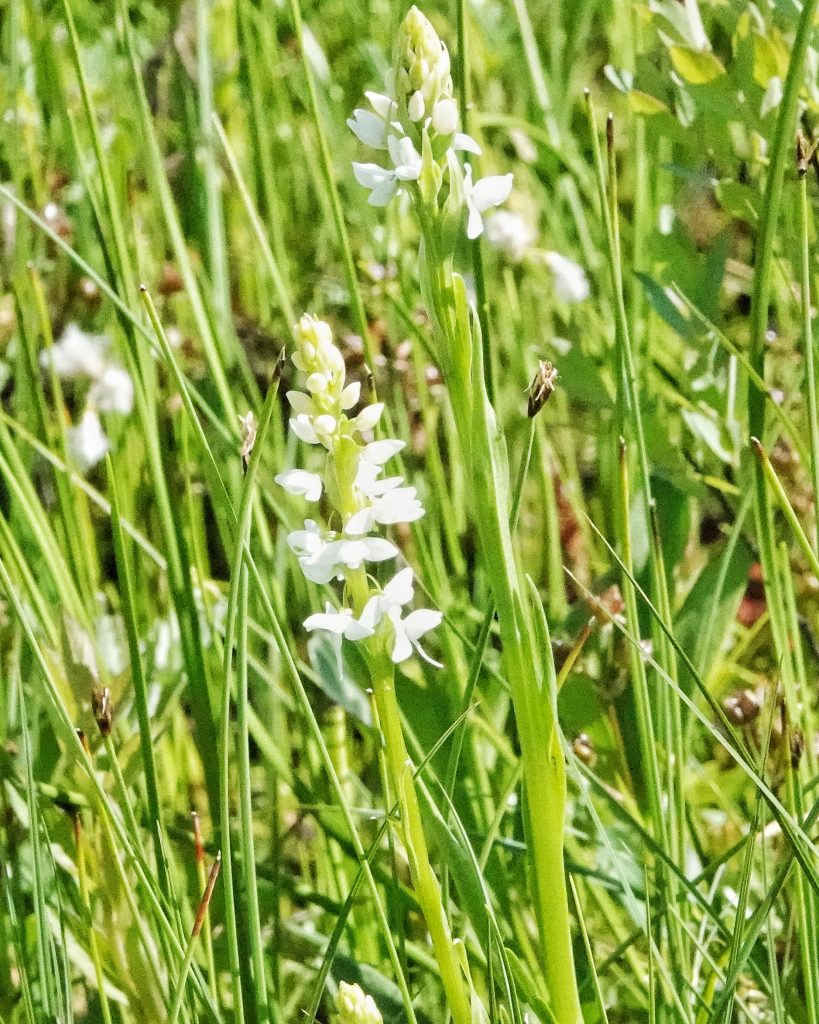
These beautiful orchids (which go by the common names bog candle, tall white bog orchid, white bog orchid, fragrant white bog orchid, rein orchid, or scentbottle) were all found in the relatively solid peat toward the margins of the bog (one of my readers suggests that this may be a fen rather than a bog, and she may be correct. The definition I was originally using indicated that bogs were dominated by Sphagnum moss and fens are dominated by graminoids, i.e., grasses, sedges, and reeds, so I assumed that this was a bog based on the massive amounts of Sphagnum. However, a more precise delineation appears to be that fens are hydrated by watercourses and springs running into them, and bogs receive their moisture strictly from rainfall and runoff. I am pretty sure there are no streams feeding the wetland I wrote of in the blog ‘South Prairie‘ and mention here, but I can’t say for certain that there are no springs.)
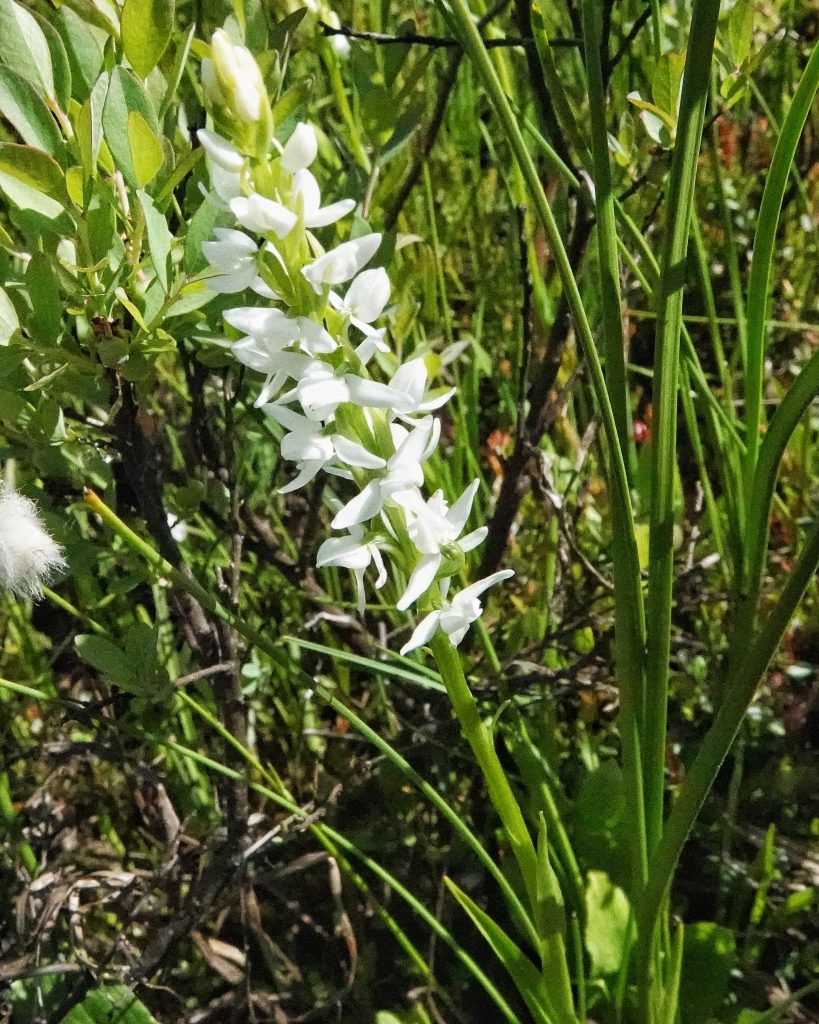
There are “3 weakly defined varieties” according to “Flora of the Pacific Northwest”, and I believe these are var. P. d. dilatata, because the spur is roughly the same length as the lower lip of the flower. But there is much intergrading between the varieties. I had only seen Platanthera dilatata one time before, and those were growing in a wet meadow rather than a bog. But they are a distinctive plant, with their thick stalk and closely held, elegant white flowers, and coming upon them that first time in the twilight I could readily see how they got the common name bog candles.
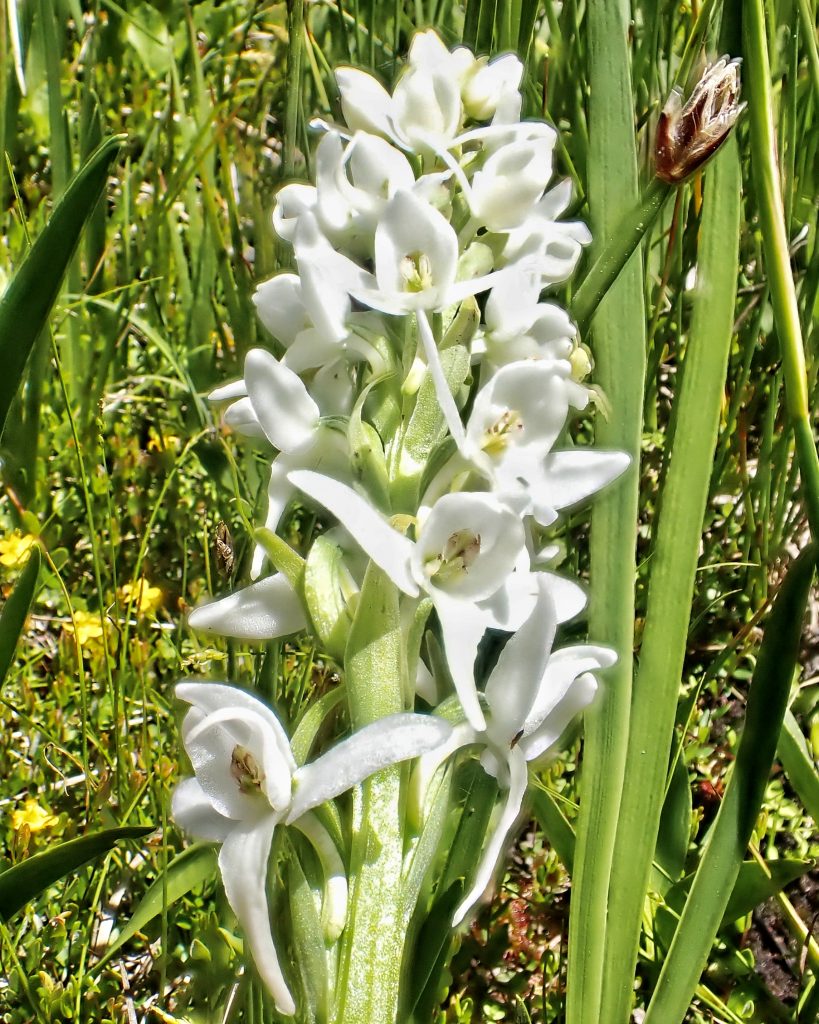
Ethnobotany-“…Plant used in the sweatbath for rheumatism and various joint and muscle aches…Root juice taken with water for gravel…Plant used to wash guns ‘to insure good luck when hunting’…Plant used in wash by women ‘hoping to gain a mate and have success in love’…” For more information see the 13 entries at BRIT – Native American Ethnobotany Database.
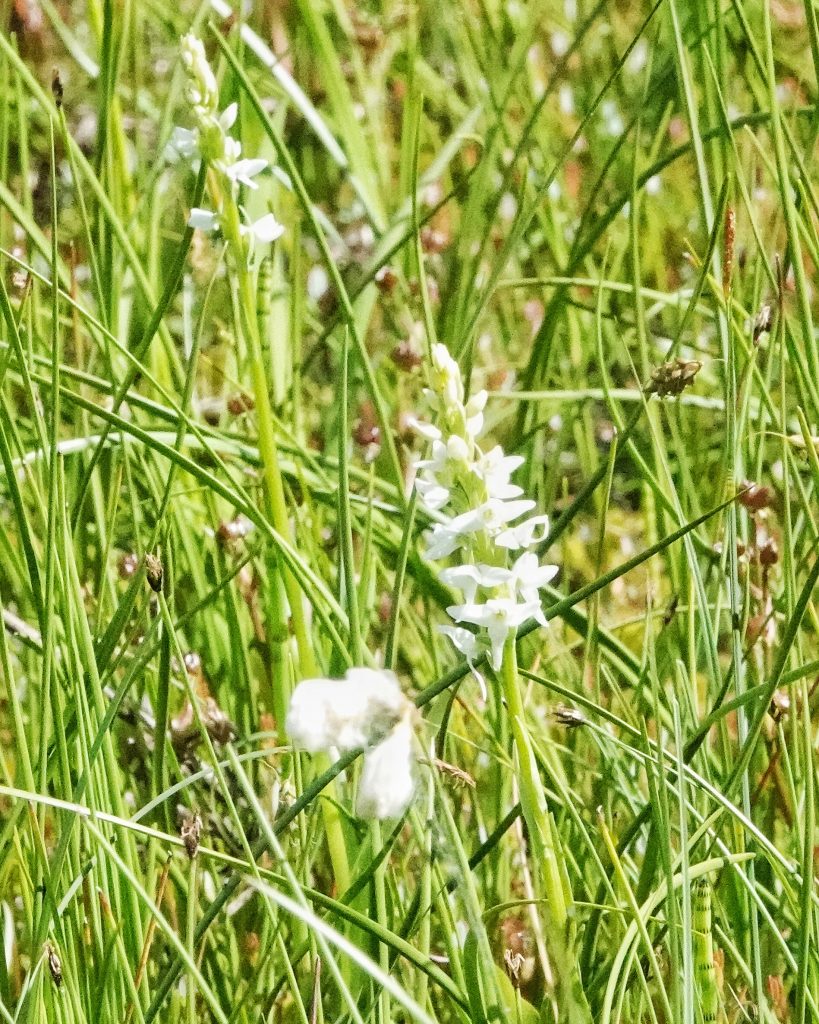
Description– “Stems stout, erect. Basal and stem leaves lance-shaped, gradually smaller upward. Inflorescence consists of waxy white flowers loosely spaced to crowded with leaves on stem. Flowers spicy-fragrant, to 1 in. across, lower petal very slender at tip and abruptly expanded near base. Spur on back of flower can be longer or shorter than lower petal and straight to slightly curved.” Platanthera dilatata</em> var. <em>dilatata | White Bog Orchid | Wildflowers of the Pacific Northwest
Similar species– Other Platanthera have very small flowers (P. chorisiana), or greenish flowers, or lack leaves on the upper 2/3 of the stalk; Spiranthes spp. lack a spur.
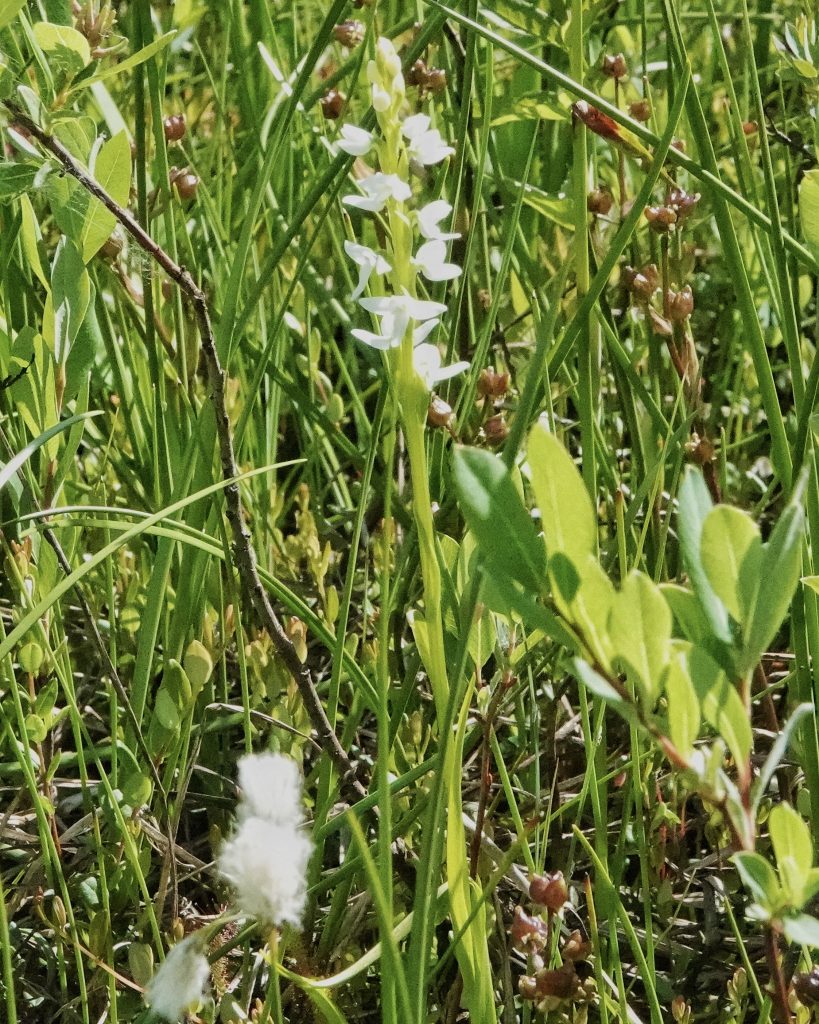
Habitat– “This is primarily a wetland species, found in wet marshes, fens, bogs, along riverbanks and roadsides, and in wet tundra environments in the northern part of its range.” Platanthera dilatata (Bog Candle, Tall White Bog Orchid): Go Orchids
Range-“…widely distributed across northern Canada and the United States, with populations throughout western and central regions, as well as around the Great Lakes and in the northeast.” Platanthera dilatata (Bog Candle, Tall White Bog Orchid): Go Orchids ; found region wide in appropriate habitat in the PNW
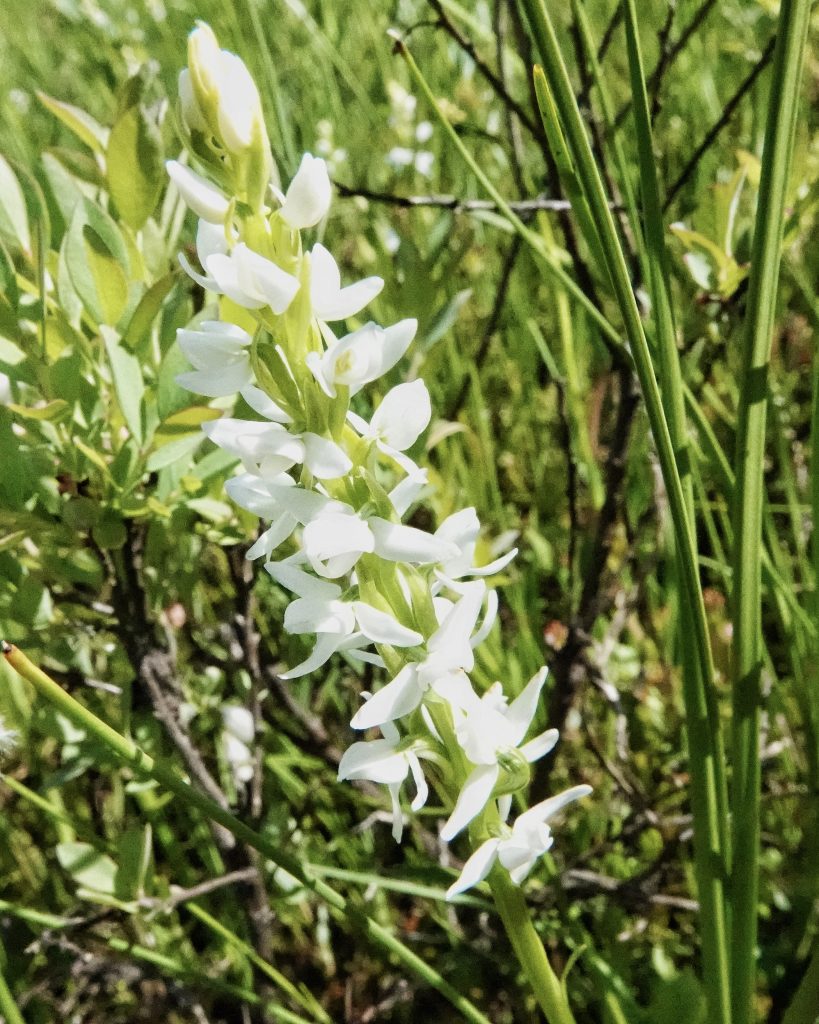
Eaten by– “The fragrant white flowers of this orchid may be visited day or night by skippers or the nectar-drinking owlet moth, Mesogona olivata. These moths do not hover while they feed from orchids, but must land on the flower like a bee or hoverfly. The different lengths and shapes of the nectar-secreting spur found in the three varieties of this orchid strongly suggests that different insects pollinate this orchid over its broad range.” Platanthera dilatata (Bog Candle, Tall White Bog Orchid): Go Orchids; ““Nectar: Anarta oregonica (Noctuidae), a pollinator; and likely other moths (Larson, 1992). Flowers much visited by California Dogface and Western Tiger Swallowtail (Alarcon et. al.), Pale Swallowtail (Mountain Plants of the Western Cascades web site), Anise Swallowtail (Dave’s Garden web site photograph), Two-tailed Tiger Swallowtail (Mike Grandmaison poster), Western Painted Lady.” https://www.cnps-scv.org/images/handouts/CaliforniaPlantsforLepidoptera2014.pdf; other than this I can find no information on what eats these plants.
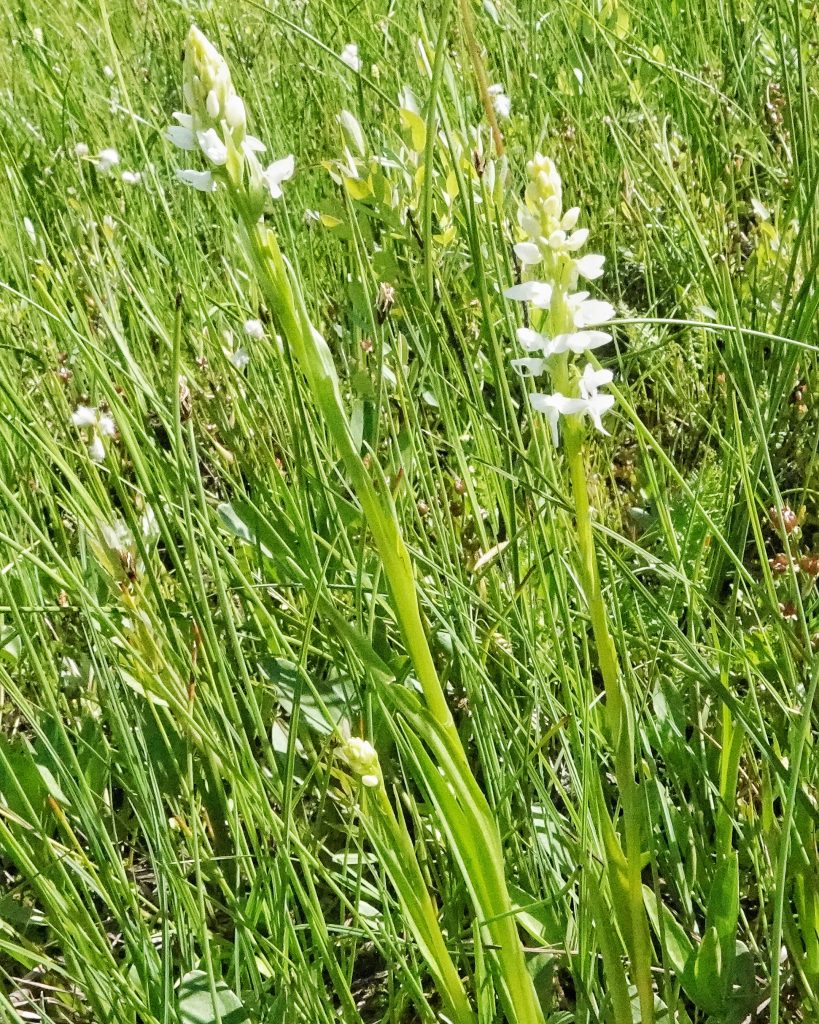
Reproductive timing– Blooms June-September depending on elevation, latitude, and variant.
Etymology of names– Platanthera is from the Greek words for ‘broad anther’, and refers to the separation at the base of the pollen mass (called a pollinia) in the type species of the genus. The specific epithet dilatata is from the Katin word for ‘dilated’, and refers to the lower lip of the flower (labellum) being dilated, i.e., broader at the base than at the tip.

Platanthera dilatata (Bog Candle, Tall White Bog Orchid): Go Orchids
OregonFlora Platanthera dilatata
https://research.library.mun.ca/4178/1/Boland_JTodd.pdf
BRIT – Native American Ethnobotany Database
https://www.cnps-scv.org/images/handouts/CaliforniaPlantsforLepidoptera2014.pdf
https://media.proquest.com/media/hms/PFT/2/nt1cG?_s=1i4zxFYJnbZ%2BRc%2BJTM6zArTyyo8%3D
Platanthera dilatata – Burke Herbarium Image Collection
https://en.wikipedia.org/wiki/Platanthera_dilatata
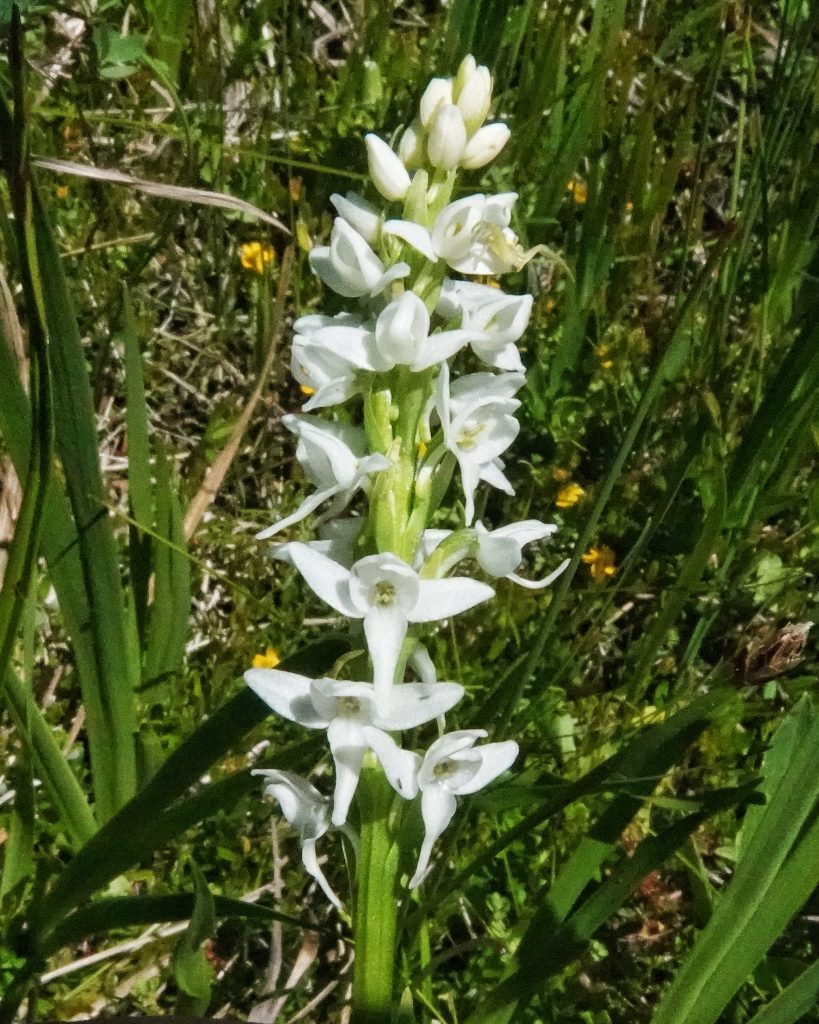
Beautiful and interesting! Thank you for sharing.
Thanks for your appreciation, Dina!